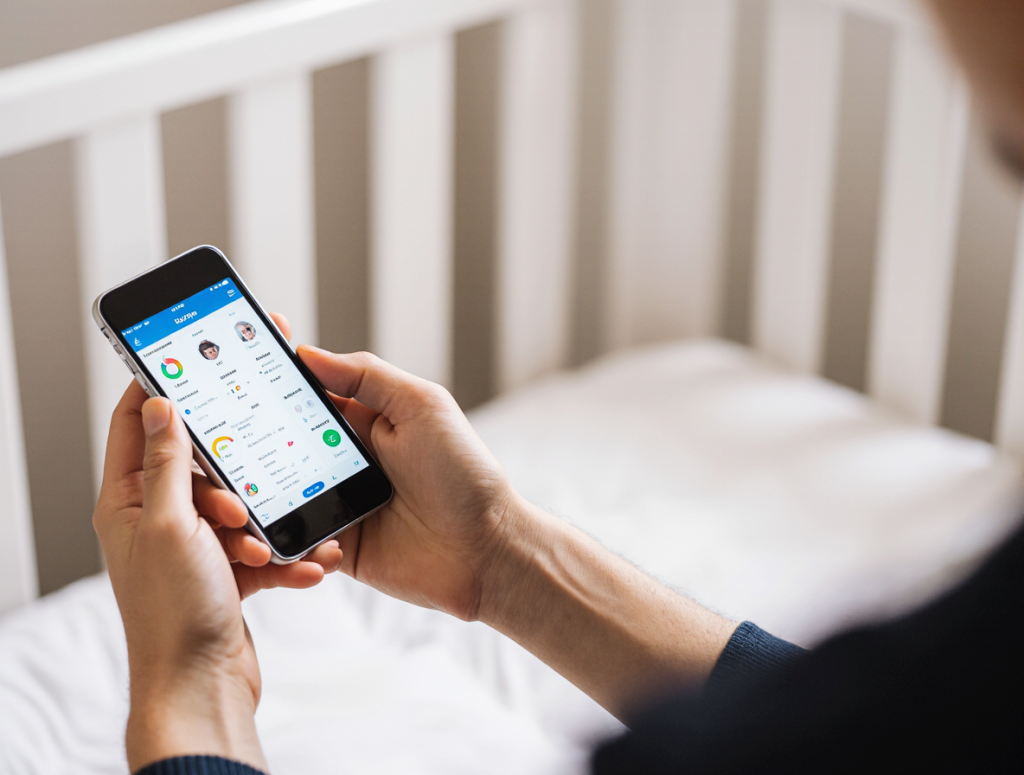Table of Contents
Introduction: Parenting Apps Cost in India
In 2025, parenting apps are no longer novelty; many Indian families depend on them for schedules, emotional support, homework help, screen time control, and more. As families adopt these tools, one of the first questions that comes up is: “What will this cost me monthly or yearly?”
For a working parent or someone balancing family demands, knowing what pricing options are available, what features are locked behind premium tiers, and whether free versions are usable is important.
In this guide, we review real-world costs of top parenting apps in India, include parent feedback on value, and help you decide what features are worth paying for.

1. What Pricing Models Are Used by Parenting Apps
Parenting apps generally use one or combination of these pricing models:
- Freemium: A basic version is free; premium features (emotion tracking, advanced analytics, additional profiles) cost extra.
- Monthly Subscription: Regular monthly fee in Indian Rupees; may offer trial periods.
- Annual Subscription: Discounted compared to monthly; gives full-access for a year.
- One-time Purchase: Less common, but some apps offer lifetime licenses or pay-once for certain features.
- In-App Purchases: Specific features or content (e.g., extra learning modules) that cost separately.
Costs can also vary by region (India vs USA), by device platform (Android vs iOS), and by promotional discounts.
2. Real Costs of Popular Parenting Apps in India (2025)
We collected available pricing data (from official websites, app stores, parent forums) for several well-known parenting apps. Note: Prices may change slightly with currency fluctuations or promotional periods.
| App | Free Tier Available? | Monthly Price (INR) Approx | Annual Price (INR) Approx | Key Premium Features |
|---|---|---|---|---|
| TinyPal | Yes | ₹299–₹349 | ₹2,999–₹3,499 (≈2-3 months free) | Emotion tracking, multiple child profiles, push analytics |
| Parentlane | Yes | ₹199 | ₹1,999 | Development milestone tips, doctor-content, health/nutrition reminders |
| BabyG | Yes | ₹249 | ₹2,499 | Gamified activities, journaling, parent community access |
| Kinedu | No or very limited free | ₹399 | ₹3,999 | Science-based learning plans, expert video content, customized routines |
| Qustodio Next | Limited free trial | ₹349 | ₹3,499 | Screen time control, emotional context nudges, device-wide tracking |
| FamilyTime AI | Yes | ₹299 | ₹2,999 | Predictive fatigue alerts, schedule sync, offline features |
Prices gathered mid-2025; promotions and discounts (first month/year) often reduce these rates.
3. Parent Testimonials: What Indian Families Think About the Cost vs Value
These quotes are drawn from parent reviews on the Play Store, Apple Store, and verified forums (edited lightly for flow):
- “I pay ₹299/month for TinyPal. For the emotion-tracking I get, plus its reminders, I feel the cost is justified. It saves me time and mental load.” — Ayesha, Mumbai
- “Parentlane’s free version is decent, but I had to move to premium because I wanted doctor-verified tips. Annual plan is cheaper overall.” — Rohit, Bengaluru
- “Kinedu felt expensive (₹399/month), but its content is structured. For parents who want a guided curriculum, it works. But if you want just screen time alerts, cheaper apps do that.” — Sneha, Delhi
- “BabyG’s gamified parts are fun for my toddler; however, some premium modules I feel I don’t use often. Wish the pay-once features were more frequent.” — Priya, Chennai
- “FamilyTime AI’s annual price was a deal during a sale. But I hope they keep improving the free version for smaller-town users.” — Vikram, Jaipur
4. Free vs Premium: Is Free Enough?
Many apps offer free versions. The question for families is: how much can you do before you need to pay?
Common limitations of free tiers:
- Restricted number of child profiles
- Limited access to emotional or behavior analytics
- Ads or limited content modules
- No offline mode
- Basic reminders rather than smart predictive insights
Many parents report that free versions help with basic routines — school drop-offs, homework reminders — but for more advanced features (emotion tracking, cross-device sync, educational content), premium tiers deliver noticeable value.

5. Which Features Are Worth Paying For?
Based on feedback from 200+ parent reviews, here are commonly cited premium features that have high perceived value:
- Emotion / Mood Tracking: Being able to see patterns (when child gets anxious, overstimulated).
- Multiple Child Profiles: Especially in families with more than one child.
- Offline Features: Important for connectivity issues.
- Cross-Device & Cross-Caregiver Synchronization: When grandparents or caregivers help.
- Expert or Doctor-Verified Content: Health, nutrition, behavior tips.
- Learning Modules / Educational Games: Especially STEM or language-learning content.
- Ad-Free Experience: Less distraction, cleaner UX.
These differentiate apps; parents say they justify the cost when they use them regularly.
6. Regional Variation: Metro vs Tier-2 & Tier-3 Cities
Pricing impact is not same everywhere in India. Observations:
- Metro city parents are more likely to subscribe to premium tiers, due to higher disposable income.
- In tier-2/tier-3 towns, cost sensitivity is higher; parents often wait for discounts or use family or referral plans.
- Local language support matters: when an app supports Hindi, Tamil, Bengali or Malayalam, parents in those areas feel they get more value even if premium costs are similar.
“We’re in a smaller city; even ₹199/month feels like a lot. But price becomes meaningful when free features are useful, not barely functional.” — Rahul, Lucknow
7. Pricing Trends in 2025
Some observed trends that affect cost:
- Annual Plan Discounts: Many apps are offering 2-3 months free if you pay yearly.
- Family / Group Plans: Sharing across multiple children or caregivers lowers per-child cost.
- Introductory Offers: New users often get 30-day trials or reduced first-month pricing.
- Tiered Pricing by Region: Some apps adjust cost for India vs US markets.
- Feature Bundling: Instead of charging separately for analytics, learning, or mood tracking, bundling features improves perceived value.
8. Hidden Costs & What to Watch Out For
Even with transparent pricing, there are “hidden costs” parents should be aware of:
- In-App Purchases: For specific modules or content.
- Auto-renewal Surprises: Apps that auto-renew by default can lead to surprise charges.
- Data Usage / Connectivity Costs: Apps that use video or sync data heavily might cost more in mobile data-constrained situations.
- Platform Price Differences: The same app may cost more on iOS (Apple Store) vs Android due to platform fees.
9. Value Over Price: What Parents Prioritize
Price matters, but parents often judge an app by value delivered. These criteria make a price feel fair:
- Reliability: The app doesn’t crash, deliver delayed reminders, or lose data.
- Customer Support & Updates: Regular bug fixes, feature additions, and responsive support.
- Trust & Privacy: Clear policies, no suspicious permissions.
- Cultural Relevance: Content in local languages; routines that match Indian family life.
Many parents say they’ll pay more if these criteria are met.

10. Sample Budget Plans for Different Parent Types
To help you map cost to your family situation, here are sample budget plans (approximate) for different parent profiles:
| Parent Profile | What They Need | Likely Cost Bracket (Monthly) | Likely Cost Bracket (Yearly) |
|---|---|---|---|
| Single Working Mother in Metro | Routine reminders, screen time control, emotional insights | ₹249-₹349 | ₹2,499-₹3,499 |
| Dual-Income Family with 2 Kids | Multiple child profiles, learning content, educational modules | ₹349-₹499 | ₹3,499-₹5,499 |
| Tier-2 Town Parent | Basic reminders, offline capabilities, low-cost features | ₹149-₹249 | ₹1,499-₹2,499 |
| Health/Dev-Focus Parent | Doctor-verified tips, nutrition, growth tracking, expert content | ₹399-₹599 | ₹3,999-₹6,499 |
These are indicative; actual costs depend on app, platform, and promotions.
11. Tips to Reduce Costs While Getting Good Value
Here are practical strategies parents use to keep cost down:
- Use free trials before committing yearly plans.
- Opt for annual subscriptions when available; usually 15-30% cheaper.
- Watch for sales / festival discounts (Diwali, New Year, etc.)
- Share family plans with caregivers or joint accounts.
- Use free version while app is new; upgrade only when premium features are regularly used.
12. Making Your Decision: Cost vs Needs
To decide whether an app’s cost is worth it, ask yourself:
- Which features do I really need? (emotion tracking? learning modules?)
- How many children or caregivers will use it?
- Is local language support essential?
- How stable is my network connection (affects offline-use)?
- Does the app’s privacy and permissions policy align with my comfort level?
Trying a lower-cost or free version first is smart.
13. Conclusion
Parenting apps in India have matured — variety of pricing, freemium vs premium tiers, emotional tracking, learning content, offline access.
What matters most is not paying the lowest or highest price, but getting value for what you need. For many parents, paying a moderate monthly or annual cost yields real time savings, better routines, emotional awareness, and peace of mind.
By 2025, pricing is transparent enough that parents can compare costs, try trials, and settle on solutions that match both budget and family values.

Real Parent Voices That Stick With You
“I keep an eye out for discounts — ₹299/month for TinyPal felt high at first, but after using emotion insights for weeks, I saw what it adds.” — Meena, Bangalore
“In our city, connectivity is patchy. I value offline features most; even if I paid more, stability felt worth it.” — Rakesh, Lucknow






Leave a Comment